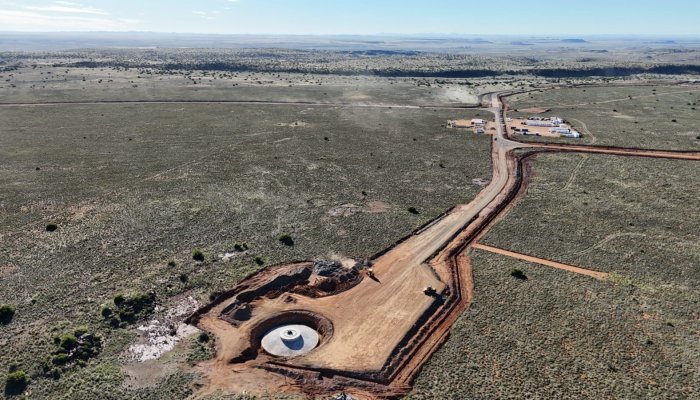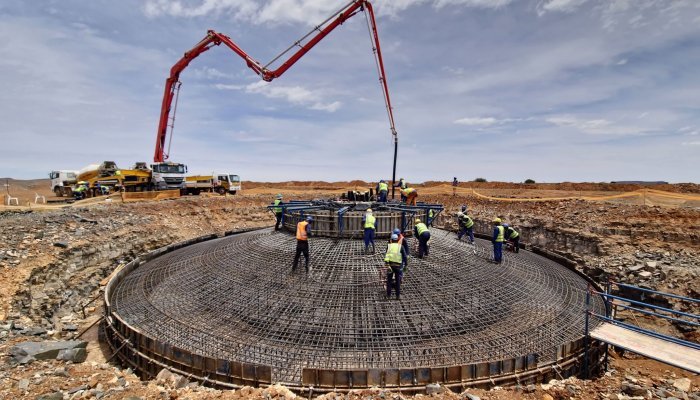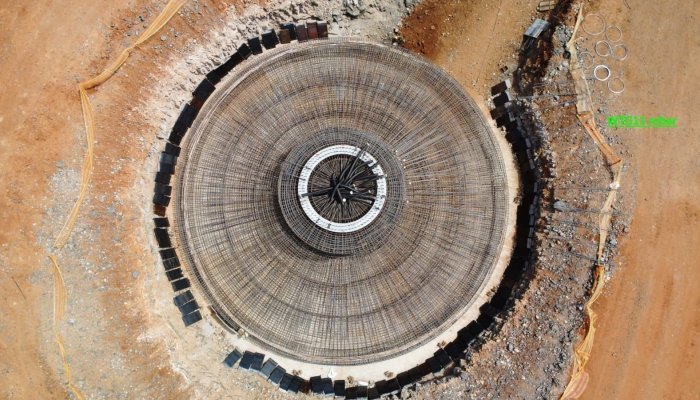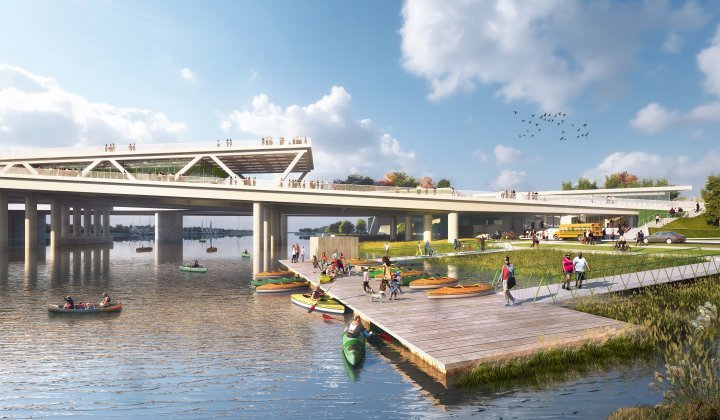Mining is by its nature not sustainable – removing resources from the earth’s crust will eventually deplete them. However, mining is still necessary. Mined minerals and metals are needed for everything from power generation (whether coal or uranium) to electronics (including lithium for batteries and rare earth elements for most technological devices).
Mining also holds significant economic importance for and influences other socioeconomic factors, from unemployment to infrastructure development. In short, mining is here to stay.
However, given its environmental impact, mining needs to be carefully managed and its effects mitigated. Mining houses and their suppliers are acutely aware of this. Many view climate change as a major business risk, and sustainability as a competitive advantage.
Sustainability and strategy
Melanie Naidoo-Vermaak, chief sustainability officer at Sibanye-Stillwater, says shared value is core to the company’s business strategy, and the group is and always has been committed to “the highest standards of resource stewardship, environmental stewardship, social responsibility, and corporate governance”.
Sibanye-Stillwater is a multinational mining and metals processing group operating across five continents. It has recently begun to diversify its asset portfolio into battery metals mining and processing and to increase its recycling and tailings reprocessing exposure globally.
“Our vision, from the start, was stakeholder-centric, and captures our commitment to stakeholder capitalism and shared value for all stakeholders,” Naidoo-Vermaak explains. “As this relates to responsible mining – we get it – we know sustainability is increasingly an asset for competitive advantage when it comes to accessing resources and capital. Our business strategy and goals are therefore aligned with the long-term interests of all our stakeholders and broader society because shared value is essential to our future success. If we are successful as a business, we are better able to create sustainable value, such as catalysing the economic development and social wellbeing of host governments and communities – in essence providing shared prosperity for all.”
This, she says, means that ESG is embedded in how the company does business, and connects its purpose (“to safeguard global sustainability through our metals”) to its strategy, operating model, and performance.
“Sustainability has always been at the core of our evolving business strategy, including more recently, the pivot to building a global green metals portfolio to augment primary mining with a circular economy strategy through tailings reclamation, and urban mining through recycling. Circularity informs our pathway to carbon neutrality by 2040 and supports the other leg – our extensive renewable energy programme. It’s appropriate then, that our CEO believes we do not just run a sustainable business but rather that our business is sustainability.”
What makes Sibanye-Stillwater unique, Naidoo-Vermaak says, is that it’s identified the need to recycle metals it would typically produce, significantly lowering the carbon footprint and putting into practice the idea that secondary (circular economy) supply must become a bigger part of total supply for a sustainable future.
Striking a balance
Naidoo-Vermaak says the mining industry has made major strides in sustainability over the past decade. “Mining is increasingly being perceived as a catalyst for economic growth, social transformation, and overall sustainability, and as an industry that can and will play a key role to address climate change,” she says. “The clean energy transition is not possible without a sustainable and increasing supply of ‘critical metals’ – essential components of renewable energy and technologies of the future. With greater understanding of the need for these metals if we are to secure a sustainable future for everyone, there appears to be a growing awareness and acceptance of the role of the mining industry.”
Kavita Pema, group head of sustainability and ESG at AECI Limited, says sustainability requires a holistic approach. AECI is a diversified chemicals solutions company, operating across 22 countries through four business segments: AECI Mining (the largest generator of revenue for the group), AECI Water, AECI Agri Health, and AECI Chemicals.
“Because we’re a diverse group, we have many different operations; we have different sectors within which we operate, and within which we have customers,” says Pema. “We have to address our impact throughout the value chain. It’s not about isolating anything, but looking at it in connection with everything else we do.”
While AECI is working to achieve net zero carbon emissions status by 2050, Pema admits it’s a complicated journey, given the group’s footprint and the complexity of its value chain. She believes reducing scope three emissions (those not produced by the company itself but those it's indirectly responsible for up and down its value chain) is what will make net zero achievable.
“We've done two years’ worth of scope three assessments, which has given us a good understanding. There are 15 categories of scope three emissions and we’ve identified the top five – those that contribute most to our overall carbon footprint. We will start focusing on those as we develop our net zero pathway. Our aim is to have scope three targets set by the end of this year. It's going to be a progressive change. It's not something you can put a peg in the ground today and say, ‘This is what we are going to do and this is how we are going to get there.’ It's going to have to be an iterative process with many lessons learnt along the way.”
The role of R&D
AECI invests heavily into research and developmet (R&D), focused on making its products more environmentally friendly and reducing carbon emissions, often passing environmental benefits to customers. R&D includes abatement technologies, carbon capture, and green ammonia, among others.
For example, in 2012, AECI Mining launched an initiative to replace virgin oil with recycled oil in its manufacturing process to create a closed loop system. In 2021, the company extended this offering to customers, offering recycling of used oils from mine trucks’ gearboxes, maintenance yards, mechanised mining units, tractors, and forklifts. These are reworked into the emulsion manufacturing process, keeping them out of landfills and cutting down on carbon emissions (and water usage). To date, approximately 2 525 000 litres of used oil have been recycled.
Another aspect of the holistic approach is working across the AECI businesses to leverage their various capabilities for the benefits of customers. “For example, we have a mining business, but we also have a water business and an agri-health business,” says Pema. “Through those businesses, we can assist mining clients in exploring water treatment and management options, conducting soil analysis to assess the impact of mining on the land, then formulating a robust remediation programme.”
Reimagining mining’s legacy
Roze Phillips, board member and adjunct faculty at the Centre for Business Ethics at GIBS, applauds the efforts of mining houses and suppliers, but questions the paradigms underpinning the economic models on which they (and business at large) operate.
She says mining in Africa has a legacy of creating economic growth, but that legacy needs to be reimagined to address climate justice. “My view is there’s not actually a conflict between nature and people, but between climate justice and social justice, and our economic models. Pitting people and jobs against climate sustainability is short-sighted. It misses the point, which is: are our economic models sustainable; should we be rethinking how to enable them for a more sustainable future? Should we think about models built on inclusive economic growth with elements of community ownership of economic value as opposed to models built on shareholder value or purely economic profit? That doesn't come more alive than in the mining sector, where this conflict is top of mind in terms of the mining houses still taking the responsibility for creating employment for many of our people.”
Phillips adds that creating a preferred future (as opposed to a perfect future, which is impossible) that is more inclusive will ensure it’s a more sustainable future. “Even the circular economy isn’t truly going to create sustainability if it remains fixed in increased consumption. If we focus on economic models that involve more regenerative practices, I think we've got a better chance of creating sustainability where everybody – mining houses, people who need employment, the climate, our wildlife, all of that – can sustainably coexist and regenerate. Unless we understand that a community has value, we will never recognise that a community is value. Working with communities moves us from lifetime employment traps to lifelong employability opportunities within communities that is also potentially good for the environment (such as sustainable agriculture on rehabilitated land). Mining houses, especially in South Africa, can lead the charge.”
Lessons for the industry
Naidoo-Vermaak offers the following advice from her experience and the Sibanye-Stillwater journey:
- Internalise climate into business decision-making: Climate change will be significant disruptor and therefore is a strategic business consideration.
- Look to create opportunities for your business through the transition: We tend to focus on risks and derisking our business, but Sibanye-Stillwater has taken a balanced approach.
- Take deliberate and decisive action.
- Collaborate: It’s a global threat and we can’t go it alone. We need to collectively contribute.
- Don’t lose sight of the just transition: we have got to take society along with us.
Pema adds insights from AECI:
- Share what works: As you find out what works, what doesn’t, and why, it’s worth sharing those lessons with the industry.
- Don’t see climate as an add-on: Climate change needs to be integrated into your business decision-making at every level. How do you not only produce responsibly, but source responsibly, operate efficiently, etc?
- Keep people front and centre: If we do not get the social issues around us sorted out, we are never going to win the climate war. We have to make sure we bring our people in our communities with us along the way. We have to empower; we have to educate; and we have to make sure that everybody is on the pathway.
Climate projects in action
Sibanye-Stillwater highlights several of its climate initiatives:
- Physical and transitional climate risk modelling: Modelling based on a Task Force on Climate-related Financial Disclosures (TCFD) study enables Sibanye-Stillwater to understand its climate change exposure, and to inform avoidance, mitigation and adaptation strategies. The group is rolling out findings and recommendations in 2024 towards improving overall climate resilience.
- A decarbonisation roadmap has been developed to put Sibanye-Stillwater on a trajectory towards carbon neutrality by 2040 and net zero by 2050, including rollout of renewable energy (632MW in the form of solar and wind energy) for use at mining operations and metallurgical processing plants. Three projects totalling 267MW of solar and wind capacity have been secured through power purchase agreements (PPAs) and are in construction, which will provide 15% of the company’s South African electricity requirements from 2026. A further 365MW is planned for financial close in 2024 and operation in 2026.
- Life-cycle assessments (LCAs) have been completed across several Sibanye- Stillwater commodities to understand the environmental footprint/impact across the value chain of its products.
- Digital twin simulation technologies are being deployed to improve and sustain operational efficiencies within Sibanye-Stillwater’s mining operations. Implementation at the South African operations in 2022 led to a reduction of 120GWh in electricity consumption, effectively abating ~ 125 tonnes of CO2-e.














